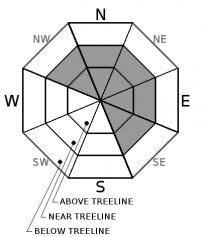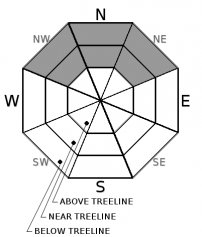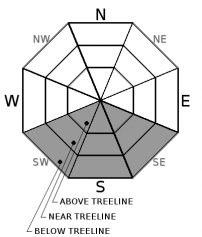| Saturday | Saturday Night | Sunday | |
|---|---|---|---|
| Weather: | Mostly cloudy to partly cloudy skies. | Partly cloudy skies. | Partly cloudy skies, becoming sunny. |
| Temperatures: | 40 to 45 deg. F. | 26 to 35 deg. F. | 48 to 53 deg. F. |
| Mid Slope Winds: | SW | NE | Variable |
| Wind Speed: | 10 to 15 mph in the morning, becoming light. Gusts up to 35 mph. | Light winds | Light winds |
| Expected snowfall: | 0 | 0 | 0 |
| Saturday | Saturday Night | Sunday | |
|---|---|---|---|
| Weather: | Mostly cloudy to partly cloudy skies. | Partly cloudy skies. | Partly cloudy skies, becoming sunny. |
| Temperatures: | 36 to 41 deg. F. | 26 to 31 deg. F. | 44 to 49 deg. F. |
| Ridge Top Winds: | SW | NE | Variable |
| Wind Speed: | 20 to 30 mph. Gusts to 55 mph decreasing to 45 mph in the afternoon. | 10 to 15 mph in the evening, becoming light. Gusts up to 35 mph. | Light winds. Gust up to 30 mph in the morning. |
| Expected snowfall: | 0 | 0 | 0 |





























